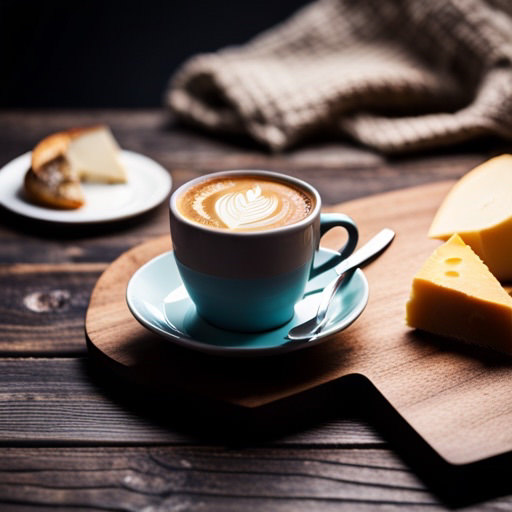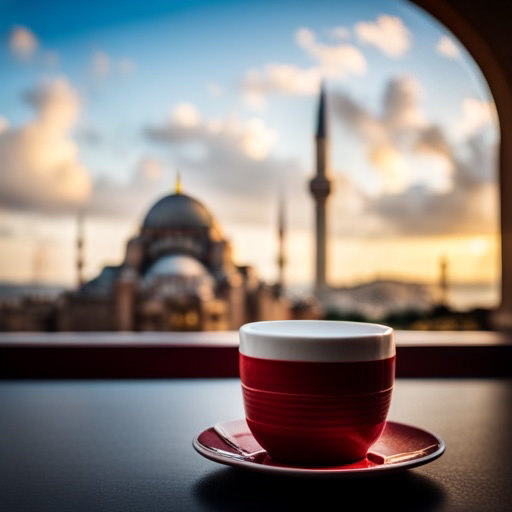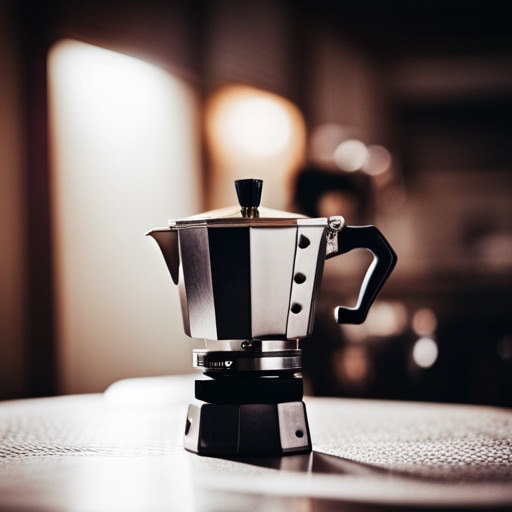When it comes to pairing coffee drinks with various meal dishes, the goal is to create harmonious flavor combinations that enhance the overall dining experience. The right coffee can complement the flavors, textures, and aromas of the food, creating a delightful balance or contrast. Just like pairing wine with food, coffee pairing involves considering factors such as intensity, acidity, sweetness, and aroma.
For example, if you’re enjoying a light breakfast or indulging in pastries, a cup of black coffee or espresso can provide a pleasant contrast to the sweetness or butteriness of the baked goods. The bold and robust flavors of the coffee can awaken the senses and provide a satisfying counterpoint to the delicate pastries.
When it comes to brunch dishes or eggs, a cappuccino or latte can be an excellent choice. The creamy texture of these coffee drinks can complement the richness of egg-based dishes like omelets or eggs Benedict. The milk in the coffee can create a harmonious balance, softening the flavors and adding a touch of sweetness.
For those who relish chocolate desserts, an espresso or a mocha can be a match made in heaven. The deep, robust flavors of espresso can intensify the richness of chocolate, while the mocha, with its combination of espresso and chocolate, can create a decadent and indulgent pairing.
When dealing with spicy or savory dishes, a cup of cold brew coffee can be a refreshing choice. The smooth and less acidic nature of cold brew can help cool down the palate and provide respite from the heat or intense flavors of dishes like spicy curries or barbecued meats. The refreshing qualities of cold brew can cleanse the palate between bites, allowing you to fully appreciate the complexities of the meal.
Pairing coffee with cheese or nut-based dishes opens up another realm of possibilities. A medium-bodied coffee like a pour-over or a French press can be an excellent accompaniment. These brewing methods bring out the nuanced flavors of the coffee, which can complement the intricate profiles of cheeses or nuts. The balance of flavors can create a memorable sensory experience, with each element enhancing the other.
Some more specific examples I found to share:
Grilled meats: A bold and dark roast coffee, such as an Italian roast or French roast, can complement the rich and smoky flavors of grilled steaks, burgers, or barbecued meats. The robustness of the coffee can stand up to the strong flavors of the grilled meats.
Seafood: Lighter seafood dishes like grilled fish or shrimp can be accompanied by a cup of light to medium roast coffee. The brightness and acidity of the coffee can provide a refreshing contrast to the delicate flavors of the seafood.
Salads: For fresh and vibrant salads, a cup of iced coffee or cold brew can be an excellent choice. The chilled coffee can enhance the crispness of the vegetables and offer a refreshing and energizing element to the meal.
Asian cuisine: If you’re enjoying Asian dishes like sushi, stir-fries, or noodles, a cup of green tea can be a great alternative to coffee. Green tea has a clean and grassy flavor that can complement the light and delicate flavors of many Asian dishes.
Dessert with fruit: If you have a dessert featuring fruits like berries or citrus, consider pairing it with a cup of Ethiopian coffee. Ethiopian coffees often have fruity and floral notes that can harmonize with the natural sweetness and acidity of the fruits.
Spicy Mexican or Latin American dishes: A cup of Mexican-style coffee, like Café de Olla, can be an ideal match for spicy dishes such as enchiladas, tacos, or mole. Café de Olla is typically brewed with cinnamon and brown sugar, which can add a hint of sweetness and complement the bold flavors of the cuisine.
Cheese-based dishes: Strong and aged cheeses like blue cheese or Gouda can be balanced by a cup of espresso. The intensity of the espresso can cut through the richness of the cheese and create a pleasant contrast on the palate.
The art of coffee pairing lies in understanding the flavor profiles of both the coffee and the dish and finding the right balance and complementarity. By experimenting with different coffee styles, brewing methods, and food combinations, you can discover a myriad of delightful pairings that will elevate your dining experience to new heights.
Please note that if you purchase from clicking on the link, some will result in my getting a tiny bit of that sale to help keep this site going.






